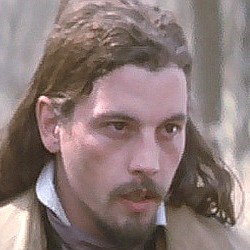

He gives the tale-teller room to stretch out in, so to speak. 3 Quantrill himself is just the kind of historical phenomenon storytellers dearly love. In his meditation on an historical theme, he is merely partaking in a tradition begun long before the birth of the movies. Like all storytellers before him, Lee has found in the story of the Borders Wars links with our own present-day contexts.

Ride with the Devil is a family drama, but one where the characters also represent a larger kind of ‘family’-the warring factions of the Civil War and the divisions in the national character.” 2 Less important, perhaps, is our expectation that Ride with the Devil will necessarily be any more faithful to the historical record than the films that have preceded it (although there are indications that in some details, at least, it will represent controversial aspects of the story that have hitherto not come to the screen). Family values and social systems are tested by war. “But it turns out that this story actually does both. “At first I wanted to get away from a family drama and do something with more action and scope,” Lee admitted during a recent interview. It might seem strange at first that a world-class filmmaker like the Taiwan-American, Ang Lee, renowned for the family dramas like Pushing Hands (1991), The Wedding Banquet (1992), and Sense and Sensibility (1997)-an artist distinguished for his sensitivity to the conflicts of class, race, and gender in family relationships-should have made this bloody, historical chronicle.

Coming to movie theaters in the Fall of 1999 is the latest installment in the Quantrill saga, Ang Lee’s Ride With the Devil. Far from being a footnote to the history of the Civil War, consigned to dusty tomes and quickly forgotten, it continues to fascinate, even perplex historians, novelists, playwrights, and filmmakers alike-even if none of them seem to agree on the general outlines, much less the details of his life. A leaf that falls and is gone.” But the story of guerrilla chieftain William Clarke Quantrill and the infamous raid he led against Lawrence, Kansas in the summer of 1863 still lives on. A man sings, loves, fights, and then he’s nothing. William Clarke Quantrill 1 “A little time is all any of us have,” declares a guerrilla raider in the motion picture, The Jayhawkers, “-most of it lonely. Tibbetts Here’s a sigh to those who love me, And a smile to those who hate And whatever sky’s above me, Here’s a heart for every fate. Riding with the Devil: The Movie Adventures of William Clarke Quantrill by John C.


 0 kommentar(er)
0 kommentar(er)
